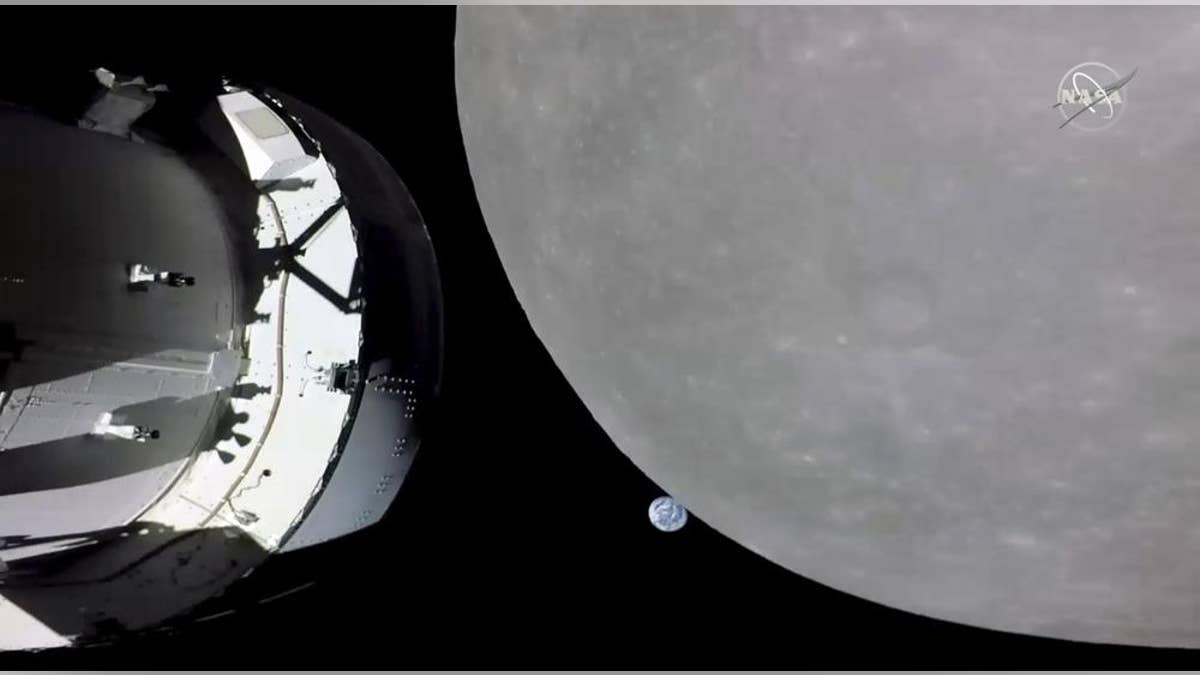NASA successfully launches historic Artemis I moon mission
Former NASA astronaut Tom Jones speaks on what the launch of Artemis I could mean for the future of space exploration on 'Your World.'
A NASA space capsule swooped around the moon on Monday, marking the first time the space agency has reached the lunar object with a vessel designed for occupancy since 1972.
NASA's Orion capsule left earth during the early morning hours on Nov. 16, on top of the space agency’s most powerful rocket ever made for a mission, expected to last 25 days, 11 hours, and 36 minutes.

NASA's Orion space capsule took a picture of Earth after coming back from the dark side of the moon on Monday. (NASA)
The capsule is expected to travel 1.3 million miles before splashing down off the coast of Baja, California on Dec. 11.
But before the capsule returns, NASA plans to have it orbit around the moon for six days.
The Artemis program is NASA's latest plan to revisit the moon.
The capsule, loaded with three dummies, went onto the dark side of the moon, where communication with earth was blacked out for a half-hour.
The blackout, according to the Associated Press, left flight controllers in Houston wondering if a critical engine firing went well. Then, the capsule came around from behind the moon, 232,000 miles from earth.
NASA'S ARTEMIS I LAUNCH TO BRING US STEP CLOSER TO ‘SUSTAINABLE HUMAN FOOTRPINT ON THE MOON’
As the Orion space capsule came around the moon, it snapped a picture of Earth. In a tweet, NASA said, "Artemis I will soon surpass Apollo 13’s record-setting distance from Earth in a spacecraft designed to carry astronauts."
CLICK HERE TO GET THE FOX NEWS APP
The last time NASA sent astronauts to the moon was during the Apollo program's last mission in December 1972.



